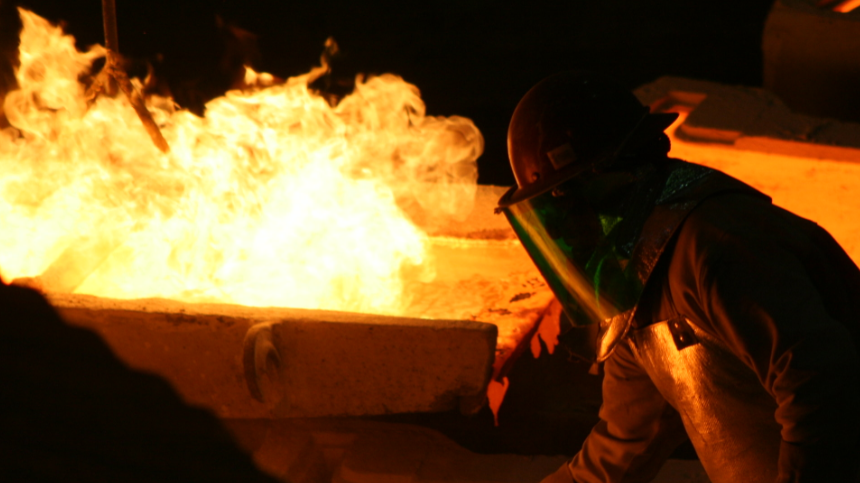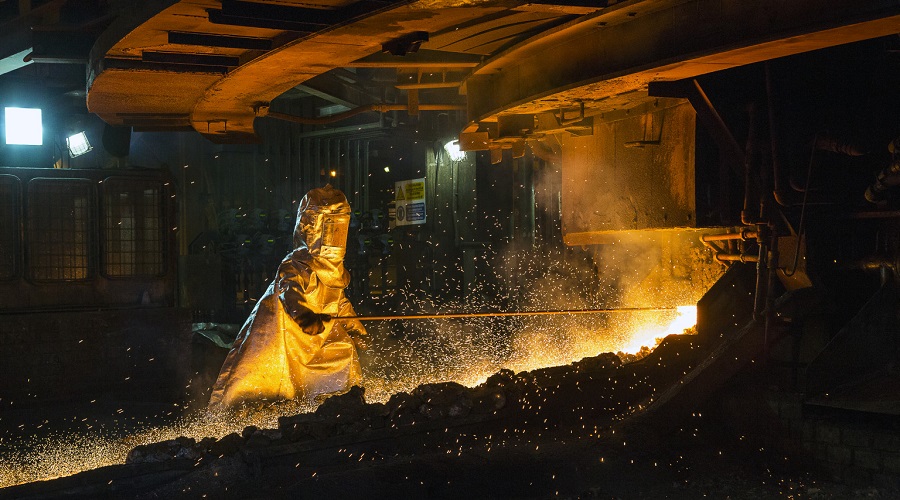Funds buy into a copper rally fuelled by China and Chile

(The opinions expressed here are those of the author, Andy Home, a columnist for Reuters.)
Hedge funds are starting to buy into the rally in copper, which continues to build upside momentum. London Metal Exchange (LME) copper hit a two-year high of $6,633 per tonne on Monday. At a current $6,490, it is now up 5% on levels at the start of the year, having clawed back all its covid-19 losses.
Funds have built significant long positions on the CME copper contract for the first time this year and net money manager positioning is now the most bullish it’s been since June 2018.
What’s attracting investors back to the copper market is the current bullish mix of strong Chinese demand and fragile Chilean supply.
Back in the game
The latest Commitments of Traders Report (COTR) shows hedge funds returning to the CME copper market on the long side.
Speculative positioning over April and May was characterized by a steady reduction in short bets as the price rallied powerfully off its March lows. Conspicuous by its absence, however, was any sign of bull commitment with long positioning flat-lining at very low levels.
Fund money was evidently drifting away to more enticing markets with industrial metals still perceived to be highly vulnerable to global economic slowdown.
That has changed over the last couple of weeks.
Copper’s exuberance looks premature, given the coronavirus is far from defeated
Speculators have lifted their outright long positions to 59,818 contracts, the highest level since January, when, pre-coronavirus, the market was collectively still expecting good things for the copper price in 2020.
Short positions, meanwhile have been cut to under 30,000 contracts over the last two COTR reports, the lowest level since early 2018.
The net balance is a collective long position of 31,517 contracts, the strongest expression of bull sentiment for two years.
To some extent this shift in positioning from short to long has been driven by the price itself because technical and automated funds are locked in a continuous feedback loop with the underlying market.
But it also reflects a bullish cocktail of fundamental drivers right now.
The COTR is backdated. The most recent captures positioning at the close of Tuesday, July 7. Since then the news flow has turned more price positive still.
China strength
China’s customs figures released overnight showed imports of 656,000 tonnes of unwrought copper in June, by some margin the highest monthly total ever.
The full breakdown will come later this month but if historical patterns hold true, refined metal imports were around 460,000 tonnes, also a record monthly high.
It’s quite possible that June’s figure may prove to be an outlier but the underlying trend has been running since the start of the year.
China’s appetite for imports of refined copper was already up by 8% over the first five months of 2020. If confirmed by China’s customs full report, that year-on-year growth rate has just accelerated to 20%.
An import-friendly Shanghai-London arbitrage no doubt helped inflate June’s tally but this year’s rising trend is being driven by a robust combination of post-lockdown manufacturing recovery, restocking and an emerging structural shortage of scrap.
Scrap collection networks everywhere have collapsed during lockdowns, a supply-chain blockage that has been compounded in China by the country’s clamp-down on scrap imports.
Copper scrap imports slumped by 48% in January-May. A promised new classification system, intended to replace the old quota system, failed to launch as expected at the start of this month.
China, remember, is the world’s largest processor of old scrap into new metal and a lack of raw material is accentuating demand for refined metal.
There is evidently some significant stock-building taking place in China as well.
Might this include the government stockpile agency, the State Reserves Bureau (SRB)? So far, the market is long on rumour but short on fact. The scale of June’s imports will almost certainly invite more speculation.
Fragile Chile
While import demand in the world’s largest copper consumer grows, production in the world’s largest producer is looking shaky.
Chile initially took a light lockdown touch to its giant copper sector, which is one of its biggest export earners.
Codelco has registered a total 3,215 covid-19 infections
National production rose by 3.9% in the first five months of this year.
However, covid-19 is now spreading through the sector, particularly at state producer Codelco, which has registered a total 3,215 covid-19 infections and nine deaths.
Codelco has pushed back work on expansion projects and suspended smelter operations at one of its divisions but unions are calling on the company to do more.
Moreover, Codelco and other miners have been running many operations at minimal staffing levels with the inevitable long-run danger of equipment failure due to lack of routine maintenance.
Just to add to Chile’s copper woes are two labour flare-ups.
The Zaldivar mine, jointly owned by Antofagasta and Barrick Gold Corp with production last year of 116,000 tonnes, is facing strike action from July 15 after unions rejected a new labour contract offer.
Meanwhile, a supervisors union at Antofagasta’s Centela mine, which produced 276,000 tonnes of copper last year, is also threatening a walk-out.
Bull cocktail
Chinese demand and Chilean supply are two of the copper market’s most enduring fundamental themes. Right now they’re combining to make for a bull cocktail with extra spice coming in the form of persistent speculation the SRB might be back in the market as well.
Evidently, word has reached the fund community that the copper price is on the move again. And they’re back again.
Copper’s exuberance looks premature, given the coronavirus is far from defeated and many economies are only now slowly recovering from economic lockdown.
But fund money can become a key price driver in itself if investors commit fully to a market like copper.
We’re not there yet but it seems highly likely that funds have lifted further their bull bets over the week since that last COTR.
(Editing by Jane Merriman)
{{ commodity.name }}
{{ post.title }}
{{ post.date }}

Comments